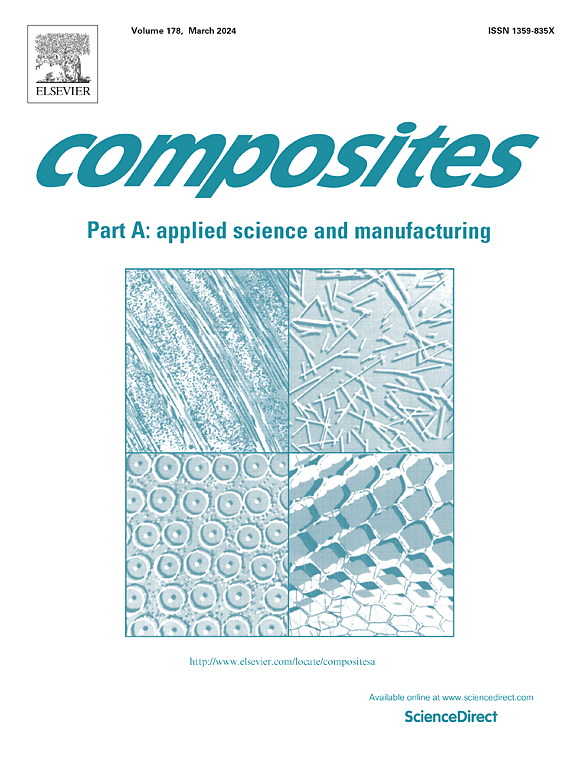Dopamine-assisted functionalized cuprous oxide induced high biocompatibility and antibacterial polyethylene fibers
IF 8.1
2区 材料科学
Q1 ENGINEERING, MANUFACTURING
Composites Part A: Applied Science and Manufacturing
Pub Date : 2025-04-14
DOI:10.1016/j.compositesa.2025.108947
引用次数: 0
Abstract
In response to the growing challenge of bacterial contamination, the development of antibacterial fibers with high efficacy and low toxicity has become a critical area of research. These fibers are typically produced by incorporating antibacterial agents into the fiber matrix through surface modification techniques. However, existing coating technologies encounter difficulties such as non-uniformity and weak adhesion, often resulting from the incompatibility between organic and inorganic interfaces. Drawing inspiration from mussel adhesion chemistry, self-polymerizing polydopamine was employed to immobilize halloysite nanotubes (HNTs) and nano-cuprous oxide (Cu2O) onto the surface of high-density polyethylene (HDPE) fibers. Additionally, cetyltrimethylammonium bromide (CTAB) was introduced to enhance the dispersion and stability of Cu2O on the HNT surface. The resulting antibacterial fibers inactivate bacteria through a combination of copper ion and quaternary ammonium salt adsorption, physical disruption by HNTs, and sustained release of Cu2+ ions. Notably, these fibers demonstrate exceptional long-term antibacterial efficacy, achieving a 99.99 % inactivation rate against E. coli and B. subtilis even after washing 50 cycles. Moreover, the antibacterial PE fibers exhibit a tensile strength of 32.5 ± 2.3 MPa and a water contact angle of 95.3 ± 0.6°, effectively preventing bacterial adhesion. The multi-layered structural design enhances both stability and adaptability, suggesting promising potential for applications in the biomedical field.

求助全文
约1分钟内获得全文
求助全文
来源期刊

Composites Part A: Applied Science and Manufacturing
工程技术-材料科学:复合
CiteScore
15.20
自引率
5.70%
发文量
492
审稿时长
30 days
期刊介绍:
Composites Part A: Applied Science and Manufacturing is a comprehensive journal that publishes original research papers, review articles, case studies, short communications, and letters covering various aspects of composite materials science and technology. This includes fibrous and particulate reinforcements in polymeric, metallic, and ceramic matrices, as well as 'natural' composites like wood and biological materials. The journal addresses topics such as properties, design, and manufacture of reinforcing fibers and particles, novel architectures and concepts, multifunctional composites, advancements in fabrication and processing, manufacturing science, process modeling, experimental mechanics, microstructural characterization, interfaces, prediction and measurement of mechanical, physical, and chemical behavior, and performance in service. Additionally, articles on economic and commercial aspects, design, and case studies are welcomed. All submissions undergo rigorous peer review to ensure they contribute significantly and innovatively, maintaining high standards for content and presentation. The editorial team aims to expedite the review process for prompt publication.
 求助内容:
求助内容: 应助结果提醒方式:
应助结果提醒方式:


